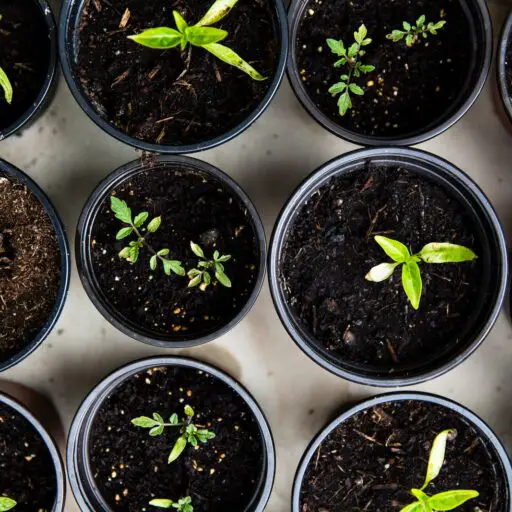Support our educational content for free when you purchase through links on our site. Learn more
Have you ever stopped to think about the incredible impact your garden can have on the environment? 🌍 While you might see it as a simple hobby, gardening is a powerful act of stewardship that can transform your backyard into a sanctuary for wildlife, a source of fresh air, and a solution to climate change. In fact, studies show that urban gardening can reduce the urban heat island effect by up to 5°F! Imagine the difference you could make by simply digging your hands into the soil.
In this article, we’ll explore 10 surprising ways gardening helps the environment, from improving air quality to supporting local biodiversity. Whether you’re a seasoned gardener or just starting out, you’ll discover practical tips to make your gardening practices more sustainable. So grab your trowel and let’s dig into the green revolution!
Key Takeaways
- Gardening reduces greenhouse gas emissions by promoting local food production.
- Native plants are essential for supporting local wildlife and biodiversity.
- Composting transforms waste into nutrient-rich soil, reducing landfill contributions.
- Water conservation techniques can significantly lower your garden’s water usage.
- Pollinator-friendly gardens enhance ecosystem health and support biodiversity.
Ready to make a difference? 👉 Shop gardening supplies to get started on your eco-friendly journey:
- Gardening Tools: Gardener’s Supply | Home Depot
- Organic Seeds: Amazon Gardening Supplies
Let’s cultivate a greener future together! 🌿
Table of Contents
Quick Tips and Facts
The Roots of Gardening: A Historical Perspective on Environmental Benefits
What is Earth-Friendly Gardening and Why Does It Matter?
The Environmental Impact of Gardening: 10 Ways You’re Helping the Planet
How to Incorporate Earth-Friendly Gardening Practices in Your Garden
The Role of Native Plants in Sustainable Gardening
Composting: Turning Waste into Garden Gold
Water Conservation Techniques for Eco-Friendly Gardening
The Importance of Pollinators: How Gardening Supports Biodiversity
Creating Wildlife Habitats in Your Backyard
Gardening and Climate Change: How Your Green Thumb Can Make a Difference
The Psychological Benefits of Gardening: A Greener Mindset
Conclusion
Recommended Links
FAQ
Reference Links
Quick Tips and Facts
As gardeners at Community Gardening™, we’re excited to share the many ways gardening helps the environment 🌿. To get started, check out our article on What is the Goal of a Community Garden? Discover 10 Inspiring Objectives! to learn more about the impact of community gardens.
Benefits of Gardening
Gardening is not just a hobby, but a way to give back to the planet 🌎. By adopting earth-friendly gardening practices, you can reduce your carbon footprint, conserve water, and create a haven for local wildlife. For more information on the benefits of community gardens, visit our Benefits of Community Gardens page.
The Roots of Gardening: A Historical Perspective on Environmental Benefits
Gardening has been around for thousands of years, with ancient civilizations recognizing the importance of living in harmony with nature 🌳. From the Hanging Gardens of Babylon to the modern-day community gardens, gardening has played a significant role in shaping our relationship with the environment. Learn more about the history of gardening and its impact on the environment at the National Gardening Association website.
What is Earth-Friendly Gardening and Why Does It Matter?
Earth-friendly gardening is all about creating a sustainable landscape that benefits the environment and simplifies gardening. By adopting these practices, you can grow a healthy garden that is beautiful, in sync with nature, and less prone to problems. As noted by the University of California, “By adopting these practices, you can grow a healthy garden that is beautiful, in sync with nature, and less prone to problems.”
The Environmental Impact of Gardening: 10 Ways You’re Helping the Planet
Here are 10 ways gardening can positively impact the environment:
- Reducing greenhouse gas emissions: By growing your own food, you can reduce your reliance on industrial agriculture and lower your carbon footprint.
- Conserving water: Gardening with drought-resistant plants and using efficient irrigation systems can help conserve water.
- Creating habitats for wildlife: Gardens can provide a haven for local wildlife, including bees, butterflies, and birds.
- Improving air quality: Plants absorb carbon dioxide and produce oxygen, improving air quality and mitigating the effects of climate change.
- Reducing waste: Composting and recycling can help reduce the amount of waste sent to landfills.
- Protecting soil health: Gardening with organic methods and using cover crops can help improve soil health and reduce erosion.
- Supporting pollinators: Gardens can provide a source of food and shelter for pollinators, such as bees and butterflies.
- Mitigating the urban heat island effect: Gardens can help cool urban areas and reduce the urban heat island effect.
- Reducing the use of pesticides and herbicides: Gardening with organic methods can reduce the use of harmful chemicals and protect local ecosystems.
- Promoting biodiversity: Gardens can provide a habitat for a variety of plants and animals, promoting biodiversity and ecosystem health.
How to Incorporate Earth-Friendly Gardening Practices in Your Garden
Incorporating earth-friendly gardening practices into your garden is easier than you think. Here are some tips to get you started:
- Nurture and protect the soil: Add compost to feed the soil, improve texture, and increase carbon capture.
- Choose plants with care: Grow native plants, use low-water plants, and remove invasive plants.
- Conserve water and energy: Replace or reduce lawn, incorporate permeable surfaces, and choose water-efficient irrigation methods.
- Protect wildlife and the environment: Provide food, water, and shelter for wildlife, practice responsible pest management, and reduce the use of pesticides, herbicides, and chemical fertilizers.
The Role of Native Plants in Sustainable Gardening
Native plants play a crucial role in sustainable gardening. They require less water, fertilizer, and maintenance, and provide a source of food and shelter for local wildlife. For more information on native plants, visit the National Wildlife Federation website.
Composting: Turning Waste into Garden Gold
Composting is a great way to reduce waste and create a nutrient-rich soil amendment for your garden. By composting food scraps and yard waste, you can reduce the amount of waste sent to landfills and create a healthy, thriving garden. Learn more about composting at the EPA website.
Water Conservation Techniques for Eco-Friendly Gardening
Water conservation is essential for eco-friendly gardening. Here are some techniques to help you conserve water in your garden:
- Use drought-resistant plants: Choose plants that are adapted to your local climate and require less water.
- Use efficient irrigation systems: Install rain barrels, drip irrigation systems, or soaker hoses to reduce water waste.
- Mulch and compost: Mulch and compost can help retain moisture in the soil and reduce the need for frequent watering.
The Importance of Pollinators: How Gardening Supports Biodiversity
Pollinators, such as bees and butterflies, play a crucial role in maintaining ecosystem health. By gardening with pollinator-friendly plants, you can provide a source of food and shelter for these important insects. Learn more about pollinators at the Xerces Society website.
Creating Wildlife Habitats in Your Backyard
Creating a wildlife habitat in your backyard is a great way to support local biodiversity. Here are some tips to get you started:
- Provide food and shelter: Plant native plants, install a birdhouse or bird feeder, and provide a source of water.
- Create a diverse landscape: Incorporate a variety of plants, trees, and shrubs to provide habitat for a range of wildlife.
- Reduce pesticide use: Avoid using pesticides, which can harm or kill wildlife, and instead use natural methods to control pests.
Gardening and Climate Change: How Your Green Thumb Can Make a Difference
Gardening can play a significant role in mitigating the effects of climate change. By growing your own food, reducing waste, and conserving water, you can help reduce your carbon footprint and support a more sustainable future. Learn more about climate change and gardening at the NASA website.
The Psychological Benefits of Gardening: A Greener Mindset
Gardening is not just good for the environment, but also for your mental health. Here are some psychological benefits of gardening:
- Reduces stress: Gardening can help reduce stress and anxiety by providing a calming and peaceful activity.
- Improves mood: Gardening can improve your mood and overall sense of well-being by providing a sense of accomplishment and connection to nature.
- Supports cognitive function: Gardening can support cognitive function and reduce the risk of dementia by providing a mentally stimulating activity.
Conclusion

In conclusion, gardening is a powerful tool for environmental stewardship 🌍. By embracing earth-friendly practices, you not only cultivate a beautiful space but also contribute to a healthier planet. From improving air quality to supporting local wildlife, the benefits of gardening are vast and impactful.
We’ve explored how gardening can help mitigate climate change, conserve water, and enhance biodiversity. So, whether you’re a seasoned gardener or just starting, remember that every little effort counts! 🌱
If you’re looking to dive deeper into sustainable gardening practices, consider exploring community gardening initiatives. They provide a fantastic opportunity to connect with like-minded individuals and make a collective impact.
Recommended Links
-
👉 Shop Gardening Supplies on:
- Gardener’s Supply Company: Gardener’s Supply
- Home Depot: Home Depot
- Amazon: Amazon Gardening Supplies
-
Books on Gardening:
FAQ

What are the benefits of community gardening for the environment?
Community gardening fosters a sense of community while providing numerous environmental benefits. It promotes biodiversity by encouraging the growth of various plants, which in turn supports local wildlife. Community gardens also help reduce urban heat, improve air quality, and promote sustainable practices like composting and rainwater harvesting. By growing food locally, they reduce the carbon footprint associated with transporting produce.
Read more about “What Are the Goals of Community Gardens? Discover 10 Transformative Benefits! 🌱”
How can I get involved in local gardening initiatives to help reduce my carbon footprint?
Getting involved in local gardening initiatives is easier than you think! Start by researching community gardens in your area through websites like American Community Gardening Association. You can volunteer, attend workshops, or even start your own garden. Engaging with local gardening clubs or environmental organizations can also provide opportunities to participate in eco-friendly projects.
What role do gardens play in supporting local biodiversity and ecosystems?
Gardens serve as vital habitats for various species, including pollinators like bees and butterflies, as well as birds and beneficial insects. By planting a diverse array of native plants, gardens can create a rich ecosystem that supports wildlife and promotes healthy soil. This biodiversity is essential for maintaining ecological balance and resilience against pests and diseases.
Can gardening help mitigate the effects of climate change in my community?
Absolutely! Gardening can significantly mitigate climate change effects by sequestering carbon dioxide through plant growth. Additionally, local food production reduces reliance on industrial agriculture, which is a major contributor to greenhouse gas emissions. By adopting sustainable practices, such as composting and water conservation, gardeners can further reduce their carbon footprint and promote a healthier environment.
How can I make my garden more sustainable?
To make your garden more sustainable, consider implementing practices like using native plants, composting kitchen scraps, and utilizing rainwater for irrigation. Reducing chemical inputs by opting for organic pest control methods and mulching to retain moisture can also enhance sustainability. Engaging in crop rotation and companion planting can improve soil health and increase biodiversity.
Read more about “Discover 15 Surprising Benefits of Vertical Garden Sustainability in 2024! 🌿”
Reference Links
- University of California – Earth-Friendly Gardening
- NASA – Climate Change and Gardening
- National Wildlife Federation – Native Plants
- EPA – Composting Basics
- Green Matters – How Gardening Helps the Environment
By gardening, you’re not just growing plants; you’re nurturing a healthier planet. So grab your trowel and get started! 🌼
